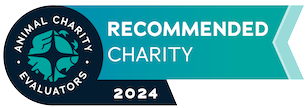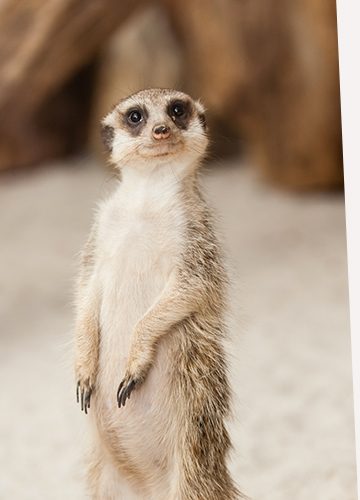We have lived alongside other animals for as long as we’ve been human. As we’ve explored in our Fundamentals about farmed animals, wildlife, companion animals, and research animals, our past and future are intricately intertwined with those of other animals, whether in our homes, in the wild, or on our plates. One of the most striking ways that our lives intersect with animals is through zoonoses — diseases passed from animals to humans. As the COVID-19 outbreak of 2019/2020 has underlined, zoonoses are serious business; they have the power to grind global economies and activities to a halt, and cost many thousands or millions of lives. In this exclusive resource, we’ll look at where zoonoses come from, why they occur, and how we can live more harmoniously with animals to stop zoonoses before they start. Click on the underlined links in the graphics to find the associated source material, and be sure to check out the accompanying blog post that looks at what we left out of this resource, and why.
Meet the Animals
It’s hard to talk about zoonoses without talking about the animals that pass diseases along — and it’s hard to talk about these animals without implicitly vilifying them. As you read about the different categories of animals below, we ask you to turn on — or turn up — your empathy dial. It’s important to remember that it’s our confinement of animals that exacerbates the risk of zoonoses. The individual animals that make up these categories aren’t villainous, they don’t spread disease intentionally, and they don’t create viruses. Indeed, in many cases, they may be just as affected by the viruses they host as we are.

Farmed Animals
6 of the top 10 virus-sharing animals in the world are farmed animals.
- Concentrated Threats – About 90 billion animals are killed around the world for food annually — most are raised on factory farms in cramped conditions
- Bearing The Burden – Outbreaks often result in mass culling: about 50 million chickens were killed after a 2015 avian flu outbreak
- Overdrugged And Resistant – In some countries, up to 80% of total consumption of medically-important antibiotics is in the animal sector, which reinforces antibiotic resistance

Wild Animals & Insects
Wildlife are host to "common" zoonoses such as rabies, as well as rarer diseases.
- A Quiet Majority – Taken together, non-human primates, bats, and rodents act as hosts for 75.8% of all zoonotic viruses
- Vice Versa – Wildlife can also suffer from diseases transmitted from humans, sometimes called anthrozoonoses
- Small Carriers – Mosquitos, ticks, and fleas can carry malaria, lyme, and other diseases; malaria alone results in over 200 million infections per year

Companion Animals
The CALLISTO project identified at least 17 zoonotic diseases of concern that can be transmitted from companion animals.
- Close Quarters – By many estimates, more than 50% of households in the U.S. have at least one companion animal
- Exotics In The Mix – The interest in exotic companion animals presents an added difficulty; more than 70% of zoonoses originate in wildlife
- Ticking Boxes – Companion animals can be host to a whole range of zoonoses: viral, bacterial, fungal, and parasitic

Humans
There are about 7.7 billion humans on earth, all of whom have potential to spread disease.
- Imminent Danger – Up to 90% of global population growth is projected to occur in cities, where density promotes disease spread
- Potential Discrimination? – Though no one is more susceptible or immune to viruses or diseases based on race alone, socio-economic factors can exacerbate risk
- Carrying The Responsibility – Humans are responsible for creating the conditions that allow many zoonotic diseases to spread and thrive
Just like our relationships with the different categories of animals listed above can vary, so too can our attitudes. Topics related to human health and diseases are deeply personal, and the range of opinions on them reflects that. In the following section, we look at public opinion research about zoonoses, specifically COVID-19.
Public Understanding
It may seem silly to discuss attitudes of people towards zoonoses, as it’s hard to imagine anyone would take a pro-zoonotic position. However, considering the volume of misinformation that circulates on social media, there are a variety of opinions that people have about zoonoses, and how we should deal with them. In the graphs and charts below, we look at the spectrum of opinions related to COVID-19 specifically. As you’ll see, the opinions range from informed and prudent to misinformed and reckless.
Intensive Agriculture
In the previous section, you might have laughed at the thought of someone taking a “pro-zoonotic” position. However, it’s arguable that as a larger society we act every day in support of zoonoses, because the biggest culprit in their creation is intensive agriculture.
Though it’s sometimes referred to as “factory farming,” its important to know that intensive agriculture doesn’t always look like the factory farms we’ve seen in undercover footage — it can look a bit different depending on the region where it occurs. However, in all cases, what makes animal agriculture “intensive” is the strict and close confinement of animals. Whether it’s chickens crammed into cages so small they can’t spread their wings or pigs arranged in stalls so tight that they cannot even turn around, scientists have been sounding the alarm for years that these systems are ideal breedings grounds for zoonoses. Even “less intensive” systems like “free run” sheds for egg-laying hens put tens of thousands of animals under one roof, also creating the conditions where a virus could easily mutate, spread, and make the jump to humans.
In the Wild
The COVID-19 pandemic has thrown the threat of zoonoses from wildlife into the spotlight like never before. But, it’s important to remember that this isn’t the first — and unfortunately probably not the last — time we’ll be dealing with zoonotic threats from the wild.
One of the biggest reasons that we face these threats is because of our encroachment into wild spaces. Deforestation to make way for grazing land has displaced many wild species, and brought unknown numbers of viruses in closer contact with people like never before. Below, we explore some of these dynamics.
It’s not just human encroachment into wild spaces that elevates our risk of zoonoses. We also kill and capture wildlife all around the world, and bring those animals back into human areas for consumption, as companions, and as trophies. All of these activities are dangerous, but in the graphic below, we look specifically at the trade in wildlife for consumption, including the so-called “wet markets” that served as a vector for COVID-19.
Urban Centers & At Home
While factory farms and wild animal markets are particularly favorable to the formation and spread of zoonoses, the vast majority of people don’t have contact with these places. For most people, urban centers, including our homes, are the places where we might come in contact with diseases passed to us from other animals. Zoonoses found in urban contexts may not result in news-grabbing headlines, but they do result in real suffering for animals: those that carry diseases humans can catch are often labeled as pests or vermin and targeted for destruction.
Living in harmony with urban wildlife can be challenging, especially since we are so often encroaching on their territory in the first place. Meanwhile, zoonoses in the home can be passed between and among our companion animals and ourselves. Below, we look at the dynamics of urban animals, companion animals, and the diseases they can spread.
This Faunalytics Fundamental has looked at the world of human-animal disease transmission, and how it affects us in a range of ways. While zoonoses are understandably frightening to deal with, the more we know about them, the more we can do to mitigate their spread and impact. What the above Fundamental shows us is that zoonoses may be inevitable in our current global system, but they don’t have to be. The data raise many questions about how to invest limited advocacy resources:
- What are meaningful ways that we can combine anti-factory farming advocacy with education about zoonoses, without simply advocating for lower-density agriculture?
- Considering the degree to which COVID-19 (and other zoonoses) have been racialized, how can wildlife advocates do their work in a way that reduces the potential for demonization of already-marginalized people?
- When it comes to wildlife, what are the key “winnable issues” that will most affect the global trade of animals for companionship or for their parts, as trophies or as food?
- How can we develop more positive relationships with urban wildlife in a way that will allow us to mitigate the risk of zoonoses without relying on lethal control?
These questions represent just a handful of possible jumping-off points, and could be topics for advocates’ consideration and additional research. We hope you find the information useful in your advocacy for all animals.
There is so much more work to be done to give advocates the insight they need to be more effective. Please donate generously now to help us bring you and other advocates this crucial information.



